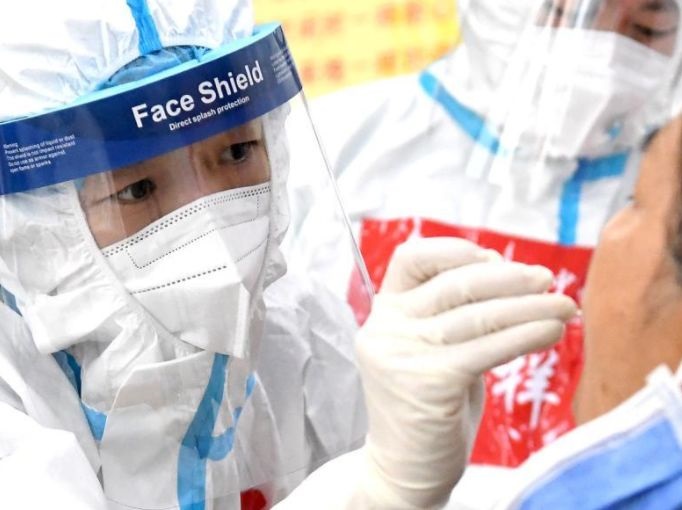
COVID-19 फॉल्स नेगेटिव क्या है?? इसका मतलब है कि एक निश्चित परीक्षण का परिणाम वास्तव में सकारात्मक होना चाहिए, लेकिन ऑपरेशन जैसे कारणों से परिणाम नकारात्मक है, उपकरण, व्यक्तिगत शारीरिक विशेषताएँ, वगैरह.
बार-बार नकारात्मक परीक्षण के बाद सकारात्मक परिणाम प्राप्त हुए, गले के स्वैब नमूने कई परीक्षणों के लिए नकारात्मक थे, लेकिन अंत में श्वसन लैवेज द्रव के नमूनों में सकारात्मक परिणाम पाए गए थे, न्यूक्लिक एसिड परीक्षण नकारात्मक थे लेकिन सीटी इमेजिंग स्क्रीनिंग ने नए कोरोनवायरस निमोनिया की विशेषताओं को दिखाया.
एक नमूना जिसे सकारात्मक होना चाहिए था, वास्तव में नकारात्मक परीक्षण किया गया था.
इसलिए, COVID-19 के लिए एक झूठी-नकारात्मक न्यूक्लिक एसिड परीक्षण का कारण बनता है?
• कम वायरल लोड की समस्या
नमूने की अवधि का प्रभाव: संक्रमण के प्रारंभिक चरण में, रोगी द्वारा धीरे -धीरे ठीक होने के बाद, और रुक -रुक कर डिटॉक्सिफिकेशन वाले मरीज कम वायरल लोड ले जाते हैं, जो कारण हो सकता है “झूठी नकारात्मक” परीक्षण में.
नमूना साइट का प्रभाव: ब्रोंकोएल्वियोलर लवेज तरल पदार्थ, गहरी थूक > नाक झाड़ू > ग्रसनी ने सैंपलिंग की गहराई और तीव्रता को स्वैब किया है.
• पता लगाने के अभिकर्मकों के साथ समस्याएं
न्यूक्लिक एसिड निष्कर्षण की दक्षता और शुद्धता, इन विट्रो डायग्नोस्टिक अभिकर्मकों की संवेदनशीलता में अंतर, और वायरस परिवर्तनशीलता.
• अन्य कारण
ऑपरेशन पर्याप्त मानकीकृत नहीं है, और नैदानिक प्रयोगशाला पर्याप्त मानकीकृत नहीं है.
कैसे निपटें “झूठी नकारात्मक” प्रयोगशाला परीक्षणों में
1. रोगी का रोग पाठ्यक्रम
विभिन्न रोग चरणों के दौरान, रोगी के शरीर में वायरल लोड भिन्न होता है. उदाहरण के लिए, संक्रमण के प्रारंभिक चरण में, रोगी का अपना वायरल लोड कम है, जिसके परिणामस्वरूप हो सकता है “मिथ्या नकारात्मक” परीक्षा.
रोगी द्वारा धीरे -धीरे ठीक होने के बाद, वायरल लोड धीरे -धीरे कम हो गया, और न्यूक्लिक एसिड परीक्षण की सकारात्मक दर तदनुसार कम हो गई. इस स्थिति का सामना करना पड़ा, अलग -अलग समय पर कई न्यूक्लिक एसिड परीक्षण करने की सिफारिश की जाती है, प्रमुख आबादी के लिए नियमित न्यूक्लिक एसिड परीक्षण का संचालन करें, और नैदानिक अवलोकन और डेटा सारांश बनाते हैं.
2. नमूनाकरण स्थल
(, और का संग्रह नाक झाड़ू की तुलना में बेहतर है ओरोफरीन्जियल स्वैब. परिणामों की सटीकता सुनिश्चित करने के लिए, यह नासोफेरिन्जियल का उपयोग करने की सिफारिश की जाती है + oropharyngeal swab विधि, वह है, परीक्षण के लिए एक ही समय में Nasopharyngeal और oropharyngeal swabs इकट्ठा करने के लिए.
3. नमूना सटीकता
नमूने की गहराई और तीव्रता पर्याप्त होनी चाहिए. नासोफरीन्जियल और ऑरोफरीन्जियल स्वैब्स के संग्रह के लिए, वायरस की उपस्थिति का पता लगाने के लिए गहरी उपकला कोशिकाओं को प्राप्त करना आवश्यक है.
4. किट गुणवत्ता अंतर का पता लगाना
आज परीक्षण किट की गुणवत्ता में कुछ अंतर हैं. संयुक्त प्रयासों और निरंतर अनुकूलन और प्रौद्योगिकी की प्रगति के साथ, यह धीरे -धीरे सुधार करेगा. अभिकर्मक समस्याओं के कारण होने वाली झूठी नकारात्मक या झूठी सकारात्मक को तुलनात्मक परीक्षण के लिए बैच संख्या या निर्माताओं के बिना अभिकर्मकों द्वारा प्रतिस्थापित किया जा सकता है.
5. अन्य तरीके
नए कोरोनवायरस के लिए एक नकारात्मक न्यूक्लिक एसिड परीक्षण के साथ संदिग्ध मामलों को पूरक निदान के लिए एक संकेतक के रूप में आईजीएम एंटीबॉडी के लिए परीक्षण किया जा सकता है. (नए कोरोनवायरस आईजीजी एंटीबॉडी परीक्षण का उपयोग यह निर्धारित करने के लिए भी किया जाता है कि क्या आप संक्रमित हैं)

















